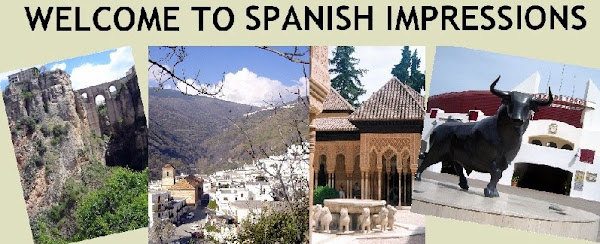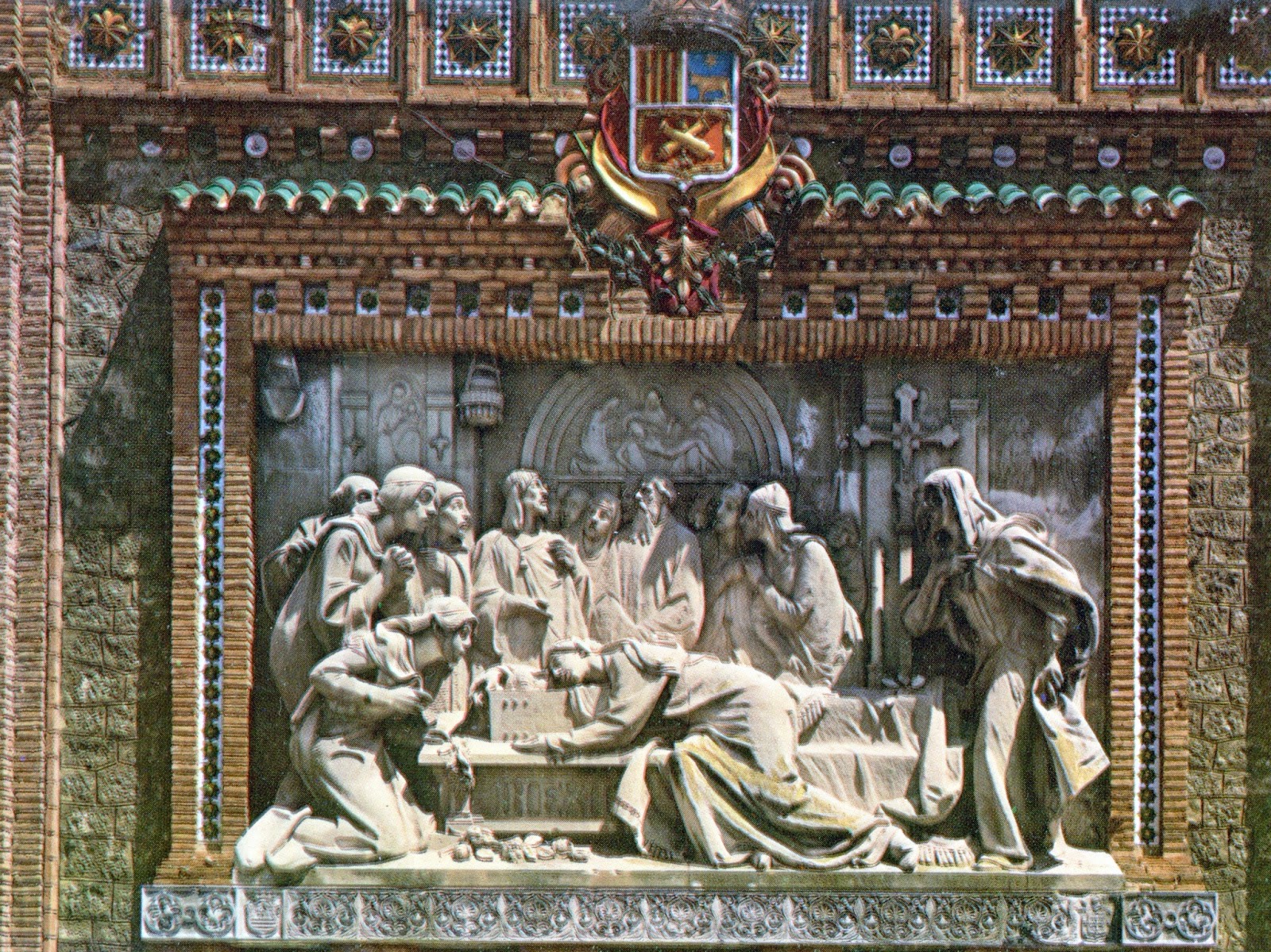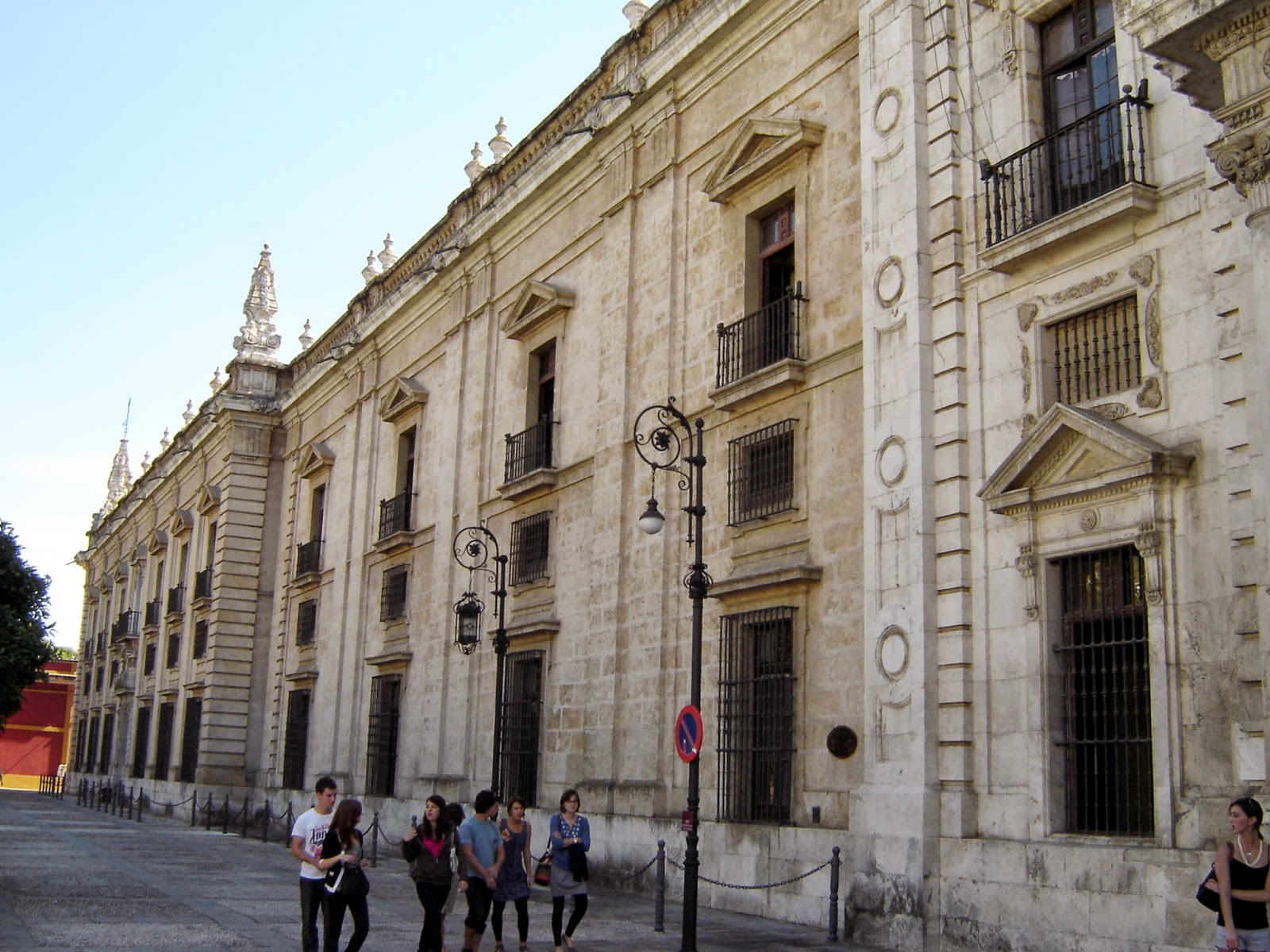by Robert Bovington
 |
| Cabo de Gata - Las Salinas |
In the south of Spain, a few miles east of Almería, there is a delightful area that offers miles of unspoilt beaches with secluded coves, sand dunes and much more within a protected coastal reserve. It is the Cabo de Gata, a natural park that I think is quite splendid. It is one of my favourite areas in the province of Almería.
It is a nature lover's delight. There are thousands of different species there including the pink flamingo and the rare Italian wall lizard. There are eagles, kestrels, puffins, cormorants, oystercatchers and storks. The extraordinary wealth of wildlife is unbelievable. There are some species that are unique to the park. This includes the dragoncillo del Cabo, which flowers all the year round. Europe's only native palm tree - the dwarf fan - is to be found here. In the sea, there are bream, grouper, prawn and squid. There are hundreds of species of seaweed, which are home to the many varieties of crustacean, mollusc and fish.
Perhaps the reason for the great variation in wildlife is due to the diverse habitats in this natural park. The 71,500 acres of the Cabo de Gata is volcanic in origin and comprises coastal dunes, steep cliffs, spectacular beaches, salt marshes, saltpans, arid steppe, dry riverbeds and a substantial marine zone. It is probably this ecological diversity that has led to the park being designated a UNESCO biosphere reserve.
As well as the spectacularly varied landscape, there are also scattered settlements of whitewashed, flat roofed houses and delightful little fishing villages.
One of the things I like about the natural park is that man's intervention can scarcely be detected in this area. There has been some development but it has mostly been confined to the existing settlements. San José used to be a small fishing village. Nowadays it is a tourist village but it has not been spoiled too much. La Isleta del Moro - only a cluster of fishing huts and houses a few years ago - is undergoing some development. Apartments are being built but they appear to be tasteful and their white façades blend in with their surroundings. Other villages have also been expanded slightly.
 |
| San José |
 |
| La Isleta del Moro |
Cortijo del Fraile
Between Los Albaricoques and Rodalquilar is a cluster of ruined buildings. The largest one is known as the 'Cortijo del Fraile'. A notice outside refers to it as a typical example of a farmhouse. However, that is only part of the story.

The famous Spanish author, Federico García Lorca used it as the setting for his chilling play 'Blood Wedding'. It was no coincidence. It is allegedly based on real life events. It is said that in 1928, a tenant farmer lived there. Apparently, he offered a large dowry to the younger of his two daughters. This angered the elder sister. A conspiracy was hatched whereby her brother-in-law would offer marriage and split the dowry with the elder sister and her husband. However, on her wedding day, the bride attempted to run away with her cousin, planning to return after the marriage was consummated to claim the dowry. As the newlyweds set out at night, they met with the elder sister and her husband. The cousin was shot in the head and the bride left half-strangled. The sister and her husband were imprisoned and the bride lived as a spinster. Apparently, she died quite recently.
The building has also been used for a number of spaghetti westerns including 'The Good the Bad and the Ugly'.
Rodalquilar
The road between the 'Cortijo del Fraile' and Rodalquilar is a bit rough but the necessary slow driving enables the traveller to enjoy the scenery. It is quite a pleasant sight, driving along this road with the yellow flowers of the pita plant silhouetted against the blue sky and the low mountains in the distance, especially on my last visit, when I observed lots of hoopoe flitting from plant to plant.
This part of Spain has always had an abundance of raw materials and this area of the Cabo de Gata has been extensively mined for 2000 years. The Romans extracted silver here. Later 'lead fever' took hold in the middle of the 19th century. However, the golden years for Rodalquilar followed the discovery of gold around 1880. At the beginning of the 20th century, a British company acquired the mining rights and, under the name 'Minas de Rodalquilar', started actively mining the precious metal. They built the millstone in which 900 tons of rock was ground day by day. Rodalquilar, with its electricity supply and its tennis courts and other luxuries was the envy of the other Andalucian villages.
 |
| Rodalquilar - old mine workings |
By the late 1930s, the British company had extracted 2,000 kg of gold and following the end of the Spanish Civil War; the mines were handed over to the Spanish government. In 1956, a second golden age came to Rodalquilar. Around 500 men from faraway countries arrived to seek work in the mines and consequently 4000 kg of gold was extracted, together with 165,000 kg of silver. The village had struck it rich. Among the new buildings erected were schools, a cinema, and a casino. This was not to last. In 1966, Spain's only gold mines were closed down. This could have led to Rodalquilar becoming a ghost town. In fact, it very nearly did so, but probably due to the protected status of the Cabo de Gata, some of the old houses have been restored.
When I visited, I walked along to a viewing platform in order to look down on the old mine workings. It was a pleasant enough view. It was not so much the dilapidated buildings that made the panorama attractive, though they were interesting enough, the Rodalquilar valley beyond the mining area looked splendid - especially with the white houses of the town further on and the range of mountains in the distance.
Driving downhill towards the town, the dusty track becomes a properly made up road with palms and adelfa bushes lining both sides. Near the old disused buildings is an Information Centre where visitors can obtain maps and guides to the area. There is a botanical garden nearby.
Playa de Playazo
The highlight of any trip to the Cabo de Gata is to visit one of the many delightful beaches. One of my favourites is the Playa de Playazo. This long unspoiled beach is only a short distance from Rodalquilar. On the way there, visitors can take a detour to view another ruin, this time a small castle called 'Castillo San Ramón', a defensive fort from the 18th century.
The Playa de Playazo enjoys an exceptional environmental setting. Incidentally, the beach is also known as the Playa de Rodalquilar due to its close proximity to the town. Playa de Playazo roughly translates as big beach. It is utterly stunning. It is long and unspoiled and its sweeping bay enjoys excellent views. It is one of a number of attractive beaches in the Parque Natural. When I visit, I usually walk along the sandy coastline until I reach some cliffs. They are easy to walk on because they are smooth, not the jagged harsh variety found elsewhere in this area. It is enjoyable clambering over the cliffs and, near the next cove, there are fossils embedded in the rocks. One could be tempted to take a hammer and chisel in order to take home some samples but that would probably be illegal - the Cabo de Gata's special status as a protected environment means there are a number of restrictions. For example collecting protected species is not allowed, nor is removing soil, sand or seabed. Fishing is restricted. It is not allowed in some parts of the park with or without a permit. Fishermen still make a living in this area but a maritime mile restriction zone has been declared in order to prevent the larger fishing vessels exhausting the seabed or destroying the natural habitat.
Whenever I visit, I look for a delightful little cove. It is only big enough for three or four people - a tiny private beach. To reach it one has to either jump seven or eight feet from the cliff-side to the beach or swim underwater through the little tunnel in the rock face. It is a perfect little haven for a seaside picnic. At the back of the beach is a shallow cave that provides protection from the fierce Almerian sunlight.
There are a number of delightful coastal villages and many more pristine beaches, some of them only accessible on foot.
Aguamarga, a small coastal town that is quite pretty. There are the traditional single story whitewashed buildings, many festooned with flowers especially bougainvillea.
 |
| Agua Amarga |
Las Negras gets its name from the shape and colour of the black hill that one can observe from the beach. It was formed by the solidification of volcanic lava. I am not that impressed with Las Negras, though I might have liked it thirty years ago. It does have character but also lots of hippies. When I last visited, a group of them sat on the pavement playing guitars and flutes. A girl in a long floral dress with bare dirty feet was juggling. Others were selling jewellery on the promenade. According to a description of the place that I found in a tourist guide, the beach has a mixture of sand, stones and volcanic rock. We only saw boulders and stones amidst a bed of grit!
Whenever I visit the Cabo de Gata I usually stop at the 'Mirador La Amatista', with its splendid panorama of the coastline. The views are stunning. It lies between Playa de Playazo and La Isleta del Moro.
La Isleta del Moro
 |
| La Isleta del Moro |
The approach to La Isleta del Moro is quite magnificent. Twin peaked hills drop down to a blue sea. Palm trees and pita frame the view. The village is another of my favourite places. It is made up of a small group of white houses where simple people who have earned their livelihood fishing have lived since time immemorial.
There is a danger of beautiful villages like this being despoiled by development. New buildings have been erected though, at the moment, they do not detract from the overall scene. Some friends of ours stayed here several years ago, in a simple hostel, and they told me that it was not quite as quaint as they remembered. It is still delightful though.
The 'The Parque Natural de Cabo de Gata-Níjar', to give it its full title, is Andalusia's largest coastal nature park. Whenever I drive around this area, I experience an abundance of different panoramic views. The coastal dunes and salt flats are surrounded by volcanic hills that fall away steeply to the sea forming dramatic cliffs and rocky promontories. The hidden coves and white sandy beaches here form part of probably the only virgin coastline in mainland Spain.
El Cabo de Gata
I sometimes visit the small village actually called El Cabo de Gata. It is a pleasant little seaside resort beside a beach of white sand. The whitewashed buildings, that line its promenade, are mainly holiday apartments, interspersed with the occasional bar. The village still supports a small fishing fleet and the fishermen's boats, nets and lobster pots pepper the beaches at the southeastern end.
The Cape
 |
| church at Salinas de Acosta |
Southeast of the village of El Cabo de Gata is the tiny hamlet of Salinas de Acosta, where salt from the Salinas is piled in great heaps. Its church, which has a very tall tower, dominates the area for miles around and is almost on the seashore. Further along this lovely coastal road there are a number of little fishermen's houses.
Beyond them the road starts a steep climb. Near the top, the road narrows and there are sheer drops down to the rocks below, so wear your brown trousers! It is well worth the perilous journey. The road eventually descends and after crossing a riverbed, between dark rocks you will emerge at the foot of an outcrop upon which stands the lighthouse. This is the actual Cabo de Gata, the cape!
I do not know why it is called the 'Cape of the Cat'. Maybe one of the rocks jutting out of the sea far below reminded someone of a cat! I don't know but the views here are tremendous. Black and grey jagged rocks emerge from the bright blue sea below. The largest of the peaks is called the 'Arrecife de las Sirenas'. Even though the road plunges quite dramatically, it is still quite high up here. The lighthouse is not open to the public but nearby is a mirador and more tremendous views.
 |
| Arrecife de las Sirenas |
The western side of the Cabo de Gata is only a very small part of the whole natural park. It is possible to walk to the eastern side of the cape, but to see more of this astonishing area in a short time a car is needed. However, the road stops just below the lighthouse. It is necessary to return to the village of El Cabo de Gata before driving to San José, the next village in the park.
On one occasion, as I drove between the cape and the village of El Cabo de Gata, I viewed the spectacular sight of hundreds of pink flamingos! I also noticed a couple of bird watchers in a hide on the shore of the lakes. Between spring and autumn, thousands of migrating birds stop here on their journeys between Europe and Africa. Apart from flamingos, there are storks, avocets, eagles and many other types. Only a few remain in the winter when the Salinas are drained after the autumn salt harvest.
There are many other delightful places in the natural park and not just the coastal parts. The inland scenery is delightful too, especially the mountains, some of which have a distinct pyramid shape to them. Compared with all the other mountain ranges in the province of Almería, the Sierra del Cabo de Gata is not nearly so high. Yet, some are still over 1000 feet! Most of the mountains here have a distinctly volcanic appearance with sharp peaks and crags. Where they fall sharply into the sea, jagged cliffs are created. These are broken by gullies leading to small, hidden coves with white sandy beaches.
The Cabo de Gata is a truly splendid place and I would recommend you visit it. Go tomorrow. There are cheap flights these days between the UK and Almería. On second thoughts don't! One of the beauties of the natural park is that so often one can find peace and solitude in this enchanting area.
Robert Bovington
www.tablondeanuncios.com
more blogs by Robert Bovington...
"Photographs of Spain"
|
|
"postcards from Spain"
|
|
"you couldn't make it up!"
|
|
"a grumpy old man in Spain"
|
|
"bits and bobs"
|
|
"Spanish Expressions"
|
|
"Spanish Art"
|
|
"Books About Spain"
|
|



.jpg)


















